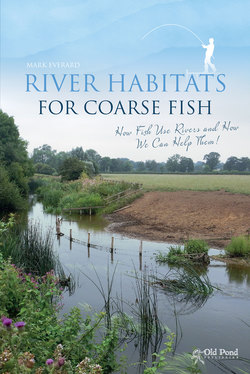Читать книгу River Habitats for Coarse Fish: How Fish Use Rivers and How We Can Help Them - Dr. Mark Everard - Страница 5
River Habitats for Coarse Fish: An Introduction
ОглавлениеA FAIR AMOUNT OF guidance has been produced over the years on habitat management for salmon and trout fisheries. Look no further than the Wild Trout Trust’s excellent Wild Trout Survival Guide as an exemplar. Yet coarse fish in rivers remain something of an ugly duckling. This is despite the fact that many more people fish and live near rivers that support predominantly coarse fish populations. Furthermore, coarse fish populations are every bit the indicators of rivers in good health that salmonid species are generally acknowledged to be.
Healthy and balanced coarse fish populations are also just as much threatened as their silver and spotted brethren. Whether we look at pollution, over-abstraction, habitat loss, invasive alien species, excessive predation or a host of other pressures, coarse fish stocks are vulnerable to all we throw at them in the name of (often unsympathetic) development.
All of these wider pressures can be significant, and require attention. But such is the impoverished, pressurised nature of contemporary landscapes that a paucity of necessary habitat can often constrain river ecosystems, including their fish populations. Habitat improvement can also go some way towards compensating for some of the broader problems that arise from low flows and some forms of pollution, and can offer refuges from increasing levels of predation in river systems. Furthermore, habitat is something that we can all do something about, whilst often the best we can accomplish in addressing the other major pressures on our river systems is to support campaigns by regulators and larger voluntary organisations.
This guide focuses primarily on the role of habitat in sustaining the life cycles of fish and supporting river health. From this initial overview, the guide then turns to practical measures that concerned anglers and angling organisations, fishery owners and rivers trusts, conservationists and conservation bodies, and the wider public can do to protect or improve river habitats for coarse fish.
This is because fish matter. You really don’t need to be a keen angler or a fish biologist to appreciate these often overlooked but iconic players in river ecosystems. This is because some fish species have direct conservation value, but is also because all fish species play important roles in the delicate balance of nature. This includes serving as prey for herons, kingfishers, otters and other, perhaps more charismatic (at least in the eyes of many of the general public), species within river ecosystems. Thriving fisheries also speak of healthy water, which is cheaper to treat on its way to our taps and safer to paddle and swim in, and of diverse ecotourism and other benefits to fishers and non-fishers like. So, when fish are absent, we all know instinctively that something is wrong.
This short pictorial guide is thus a long time overdue, and also constitutes a manifesto of the importance of river habitats for coarse fish and the wide benefits they convey to society. I hope it is picked up and used by as many people as possible. Members of the UK’s Angling Trust and the rivers trust movement, as well as wildlife trusts, fishing clubs and other fishery interests, constitute obvious reader groups, as do regulators and the owners of riverbanks. But I hope that many more people will realise that they are already more empowered than they had previously thought, and that by becoming a little more informed they will be emboldened to take into their own hands the rehabilitation of the precious yet vulnerable resource that is rivers and their coarse fish populations.
